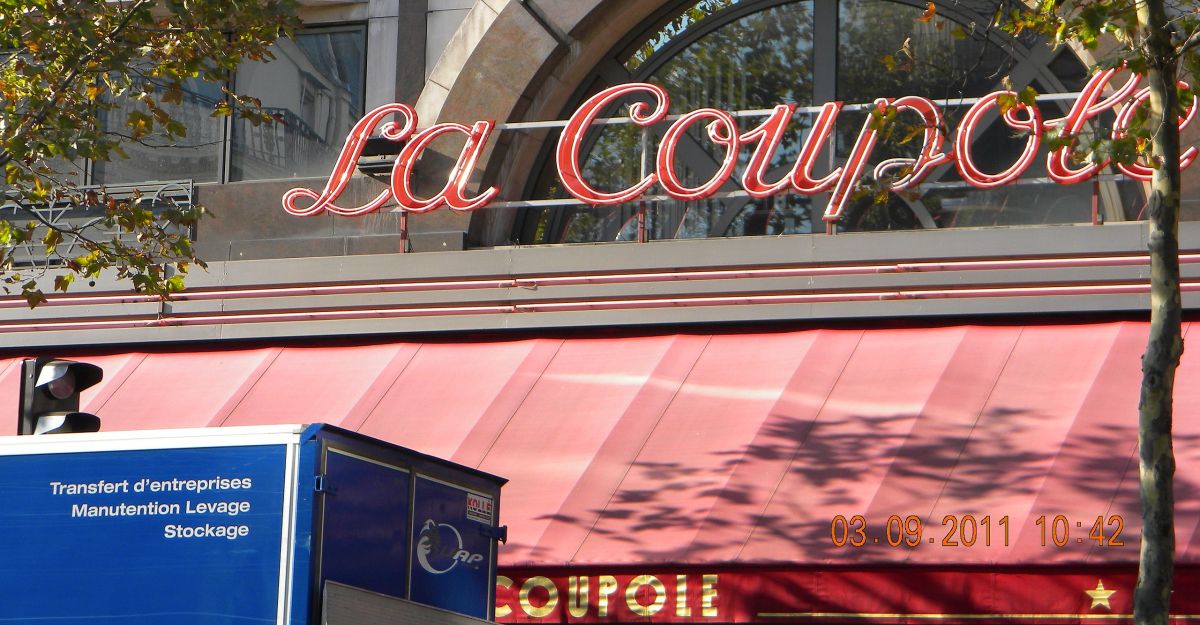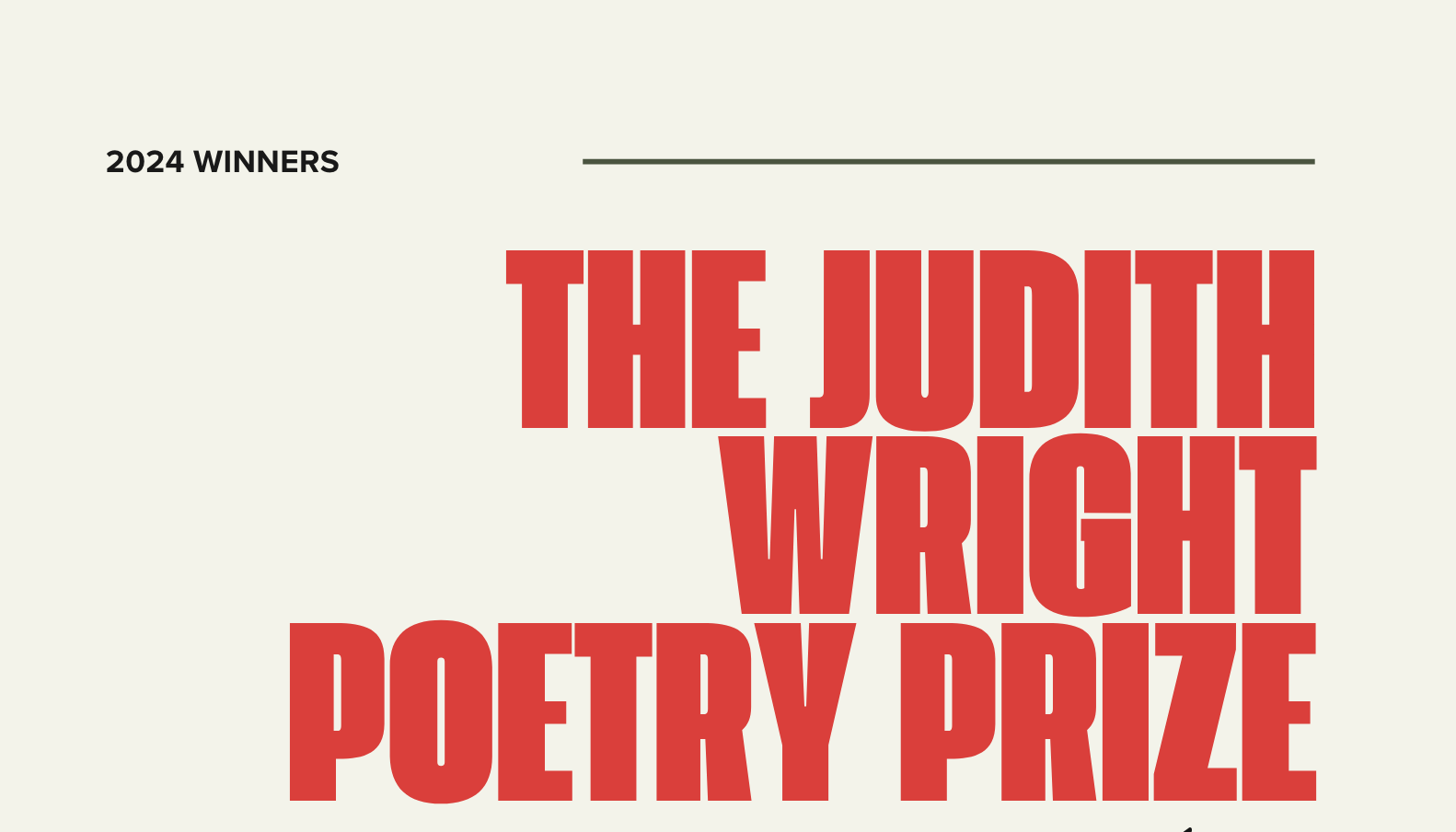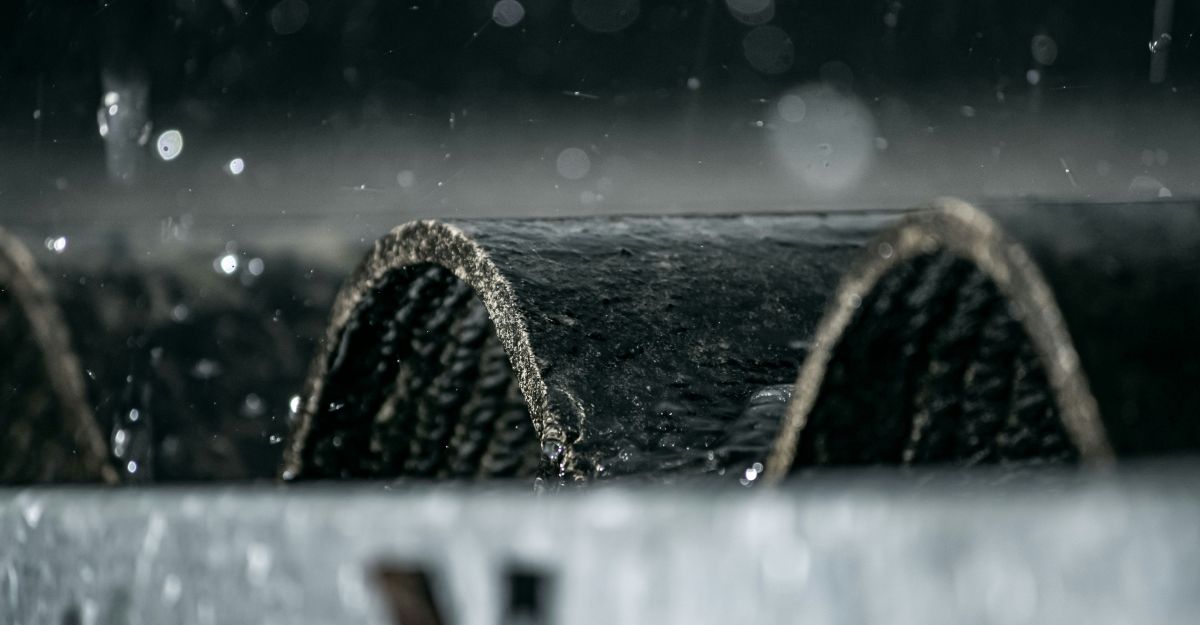A painting I used to like a lot once & thought about
I haven’t thought about
for some time. It showed
Walter Benjamin at a table in Paris.
The artist’s name I can’t recall. Not Patrick. Not Paul? Because,
the name that occurs to me is Patrick Caulfield—
also minor—(much less
varied—less ambitious,
you might almost say).
This guy was South African, came to England, then
went to America—had some Jewish themes, painted
even, a figure or two like
Chagall. His colour
too sweet too often. Not
‘Peter’—what artist is called Peter (Peter
Paul Rubens, Peter Blake … no-one I like).
It strikes me,
‘He'd be right for Tranter’
this artist—whose name
in a minute will come. ‘Memes’, a concept
that must have explained so much—or licensed it—
for Tranter—who liked
the elements, all, to be
familiar—endorsed
by use, real because pre-existent. His talent
calling them up, in irresistible sequences: the
hungry wives, the fizzy drinks,
the smell of petrol, of meat—of
meat, of course, ‘sizzling’—the colours of makeup,
of sunglasses, cocktails. Cynicism, affectlessness, appetites—
he liked all that. Realism rather than reality—but
who’s going to argue? I mean, ‘argue that’. (Now,
‘Actors’ actors’—what about
them? With a friend
I’d laugh: the duds—somehow, somewhere—thus dubbed. George
Peppard. Richard Basehart. And a name I forget!
Admittedly, Ben Gazzara
finally became useful—
long after Cassavetes had passed &
gone to heaven—useful older, playing old, annoying
stooges. Maybe he could play me? tho I am surely
differently irritating.)
Tranter ‘could really write’, that’s
the thing. Think: Fabulous Recreations
of Bad Film—so not Mouchette, but
Picnic. He liked the grammar? the screen syntax? the inevitable
ordering of the known elements
we saw & acknowledged quietly
as awful—and banal, and, on
those grounds, Undeniable. (?) Was this ‘scathing insight’, was it satire?
It was ‘adult’. (So, ‘memes’.) The phrase ‘urban myth’, tho it
arrived as a cliché—
with a clunk, use-value nil,
work done—
claimed him: Urban Myths—his new & selected. What was
that artist’s name now? whom-I-like tho-he’s-
limited?? (Where Caulfield
is all limitations—but better,
& I like him more, Caulfield—a technician.)
He retired somewhere weird, I think—walked every day half a mile
for a Starbucks, read the paper, walked
home again—to the studio. Worked.
(Ben Gazzara as me again?) (His
name, I remember—(the artist’s)—always raised
the problem of how to say it—which I’d
mastered. ‘Established’ it. When I remember it
I’ll say it.
(The minor triumph
or satisfaction, of pronouncing
Rooshay for Ruscha—Skyler for Schuyler … whom I’d called
Shyler for a while—& then Shooler for still longer.)
(The poems survived.)
‘NIGHT THOUGHTS’.
What else
have I been worrying at? Like a Guston character—
awake, staring down the barrel, thinking
am I going to end my
days critiquing Tranter?
He’s dead, he’s gone.
Better tho, than making enemies among the young. Like
John, one wants to be loved. ‘The Autumn of Central Paris’
is the painting’s
title. Benjamin sits
surrounded by others,
at La Coupole or Les Deux Magots. We
know those zinc tables. Tranter would have. And
R. B. Kitaj, the artist
would have known them too—long
before he got to know Starbucks.
(Not a name, an initial — ‘R’. I would never have got there
saying Paul, Peter, Rhys or whatever.) I’d remembered the red in it.
It is an exhilaratingly
intelligent painting
a feeling of
‘work done’, in the compression of imagery & information—that says
spies, fear, forces of Left & Right—the foreigners
—like Benjamin, who’d seen it
before—calculating,
taking the air, thinking ‘Paris’—
must get out soon. So much meaner than the Europe
Apollinaire mourned: shells sailing overhead—rain, cloud
—the ‘Old’ World represented
in the form of the Pope.
(Not totalitarianism, not much
‘Ideology’.) So. I liked it—the Paris painting—
& took an interest in ‘Kitarge’ (pronounced
Kit-eye), that lapsed, tho I
liked his landscapes—of
Israel, Palestine). An artist who thought a lot.
(These are not ‘worries’. I seem now, to be writing-for-fun.) ‘Up late’,
as is said. As
I have said, often enough—my famous ‘small mind’
given to repetition—calling
round the old sites,
checking for rust, broken pipes;
the papers the newsboy throws—that have built up
there by the tap; the leaking hose, its trail of green
where it feeds moss. But there
is no moss, no tap. (I sit in bed
writing this, seeing if I’ll
think things I haven’t thought before—or not quite
as I’ve thought them. I had a list. The third &
final item a line of names
that ended with a blank—a
space for the name of Crab’s
favourite actors’ actor. I began the poem.) Time
would supply it, the name. And might. It hasn’t yet.
I did think, “A film—they could
feature in. … Sci-fi?”
But they could not enhance
ANY movie. Why are women never considered actors’ actors?
They can all act nowadays—might be the answer.
Some I find
irritating, but they can
do the job, generally. Who
were the famous actresses ‘of yesterday’ who couldn’t?
Susan Hayward, Jane Russell, others I suppose, and
who cares? My friend,
terminally ill: there is
that to think about—tho I have
put it off for as long as possible … so long foreshadowed.
‘Ends’. Like Tranter’s. My own, … that can’t be
far off. Well, it can:
but is it? The Great Night
Worrier. Guston might be the
poster boy or talisman—that lonely worried head
a pillow behind—the round cheeks, the round eye
focused on the ceiling,
lost to its thoughts. (Is it
smoking? as well? Maybe.)
‘Martial Memories’—he came full circle—back to the
Works Project era. America’s descent into
mad self-delusion.
(There is that to worry about, for me
if not for Philip Guston.
I don’t have much leverage there exactly. Where do I have?)
Jesus Christ, ‘Cliff Robertson’! I remember the actor.
No I don’t—but I find the list.
As cardboard stands to mahogany
so stands Cliff to … whom really,
Marlon? Victor Mature? ELI WALLACH!
Lilli Palmer, maybe. Carey Mulligan. I can’t really say
“Who cares?” — I seem to.
Philip Guston. I studied him
along with the other Ab-Exers—
& liked him, his pulsing, slow abstracts. It was indicated
(Thank you, Terry) he was not as good as the real thing—
Jackson, Bill,
Mark Rothko,
not even Motherwell.
The tides of fortune shifting just then,
the change of style—(rejected, then celebrated)—his earlier work,
of the 50s, 60s, seen suddenly
as better too, in retrospect. (The corollary—
now there’s one you don’t get
often ‘in poetry’—of running down art by those deemed
unpleasant—the creeps—would be to extol art on the basis of nice-guy,
nice-woman status. There’d
be difficult adjustments to make.
Joan Mitchell—now was she an easy one
to be with? Independent, yes, fierce. But a charmer? Fun
to be around? O’Hara liked her. Twombly, for so long dudded,
then flavour of the month—a sort
of pastille that everyone could suck.
Those sweet, sweet colours &
undemanding lines. If you ‘just got with it’ the things
were moving, ravishing, sophisticated—brutal … savage.
Ah! Life, time, desire,
fine feelings—you could
swoon if you wanted.
(You don’t wanna swoon—what’s wrong wit ya?)
Take it, or leave it. For a while we did. An episode in
The history of Taste? Greenberg’s
one time phrase—
applied, I think,
to Pop Art, or Minimalism. Bonnard had been so rapturously
received, in America in the 50s, the news had permeated
here—& Terry
(Thank you, Terry)
could see their point.
We all could.
I can see it still. But, ‘still’, he’s an uneven artist
—figures sometimes flat,
uncertain. Then great.
Vuillard more consistent. Ruined
by his patrons. Court painter to a salon & a moneyed elite. Marquet
—I don’t know your work—really—but some I love.
Reputations. I suppose it’s
mine I care about. But I don’t have
‘much leverage’ there,
do I? The Bobfish, Tranter, the dirigible Les—what will be
made of them? An enormous Murray figure, a Piccinini.
I see it, floating, looking down
on the suburb of Balmain—numerous
Generation-of-68ers come out of
terraces, out of pubs & cafes, to stare at it—mouths tight—among them
Tranter, his life blighted. Things have changed of course—
something blander presides—
a world of Best Australian Poems,
ABR, the return of decorum, prizes.
Why so glum, pal? No reason—but how to end this stanza?
•
(They must end. But, once begun, why stop?
Tho there is
‘Nothing to say’—'and
Everything’.)
An impression of things—a whole—given its adequate treatment
(adjusted, allowed beam there, or sit occupying
space, as it did) might
have been Bonnard’s
ideal or intent—an
evenness—the cat the plate the table the lemon
the knife—the light & shadow—a kind of
thin plenitude mildly stated
precarious, but ‘holding’—
for one long moment. I am
recalling only one or two specific paintings
a memory. ‘Specific’ might be overstating it.
But the yellow white & orange
in just that balance I
hope to see—& fear always
not to find—visiting Bonnard. A trip
to Melbourne then, maybe? (An exhibition, somewhere
between famous & infamous,
for its wallpaper.) ‘Immersive’
has been
the selling point of much I haven’t liked the last few years—the
art reduced to spectacle, circus-ride, environment. No
place for judgement. The Bonnards
I like do something like that
So much is brought
into balance—a long horizontal landscape of
hills, shallow valleys, roads, railway line, field &
trees: pale greens, yellows, creams.
Ochre. Spots (dabs) — of
more intense colour — a work
of quietly spinning plates, tenuous but holding.
Like a spell, a moment. I wonder at Bonnard’s
mood then, was he tense
or anxious—was their plenitude
calming? (It’s not Matisse,
or Monet or Pissarro. Not Vuillard, or Marquet—
all either decisive, or more surface—less equivocal,
less troubled.) He had other
interests, in his painting
than this tenuous, populous equation,
but these are what I most love. Bonnard, you sweetie.
•
Hip & cool & tense, ‘Blues For Elvin’ plays
as I drive, up the hills to
the dentist at Blackwood
feeling like I’m in a film:
scenes, in familiar firm pursuit—the hairpin turns
the twists & perilous cliffs, the guard rails
as if I’m in the Mille Miglia
the Targa Florio. To Catch
a Thief? Two Weeks
In Another Town? numerous cheap 60s movies, set
in California, the West Coast—(a Corvette
or Jag or Porsche, the Pacific
beside, breakers rolling in, grass
& sand dunes, the fence posts
catching light—moon-light—the sea dark
a heroine with scarf & hair in the wind
Etcetera.) These movies
never amounted to much.
Freddy King comes on next—
making this definitely a teen movie & I
slow down, pull in, to the dentist’s, park ‘etcetera’.
(Thank you, Lord B.) Cary Grant
will remain known—
for a few more years—running
regularly from that plane. Thru the wheat. His
eyebrows & business shirt, shoulders endearingly thin,
cravat & clipped speech,
flirting with Grace Kelly—
the night, the sea, Monaco, the
fireworks scene—Hitchcock’s joke about sex, its
dangerous thrill in the Hayes Era Imaginary.
Ten more years?
Historians—historians
writing the History of Taste—
will remember him, as they do David Garrick,
or the greats of Shakespeare’s moment. They are ‘recorded’:
they can hardly be remembered.
The frieze that crowns
the Art Gallery of New South Wales—similarly—
‘remembers’ Praxitiles, Canova, Andrea del Sarto
Cimabue, Carracci—none now large in the mind
of the casual punter
calling in to see
what gives in the
art world these days. Nothing much, pal. You see, it’s
immersive you’ve got to give yourself to it—like the River Caves
the Ghost Train or a
light-show
(Gape, if you can,
intelligently—your mind open.) But fulminating is easy.
And not to the point. Tho is having one
my usual way? Don’t I
usually begin, & continue,
pointless, blithe—‘It
Serves Me Right To Suffer’? No—‘Glad To
Be Unhappy’, a title that’s always amused me
tho the tune itself …
Eric Dolphy—always
something of an enigma
(to me). Terry solved the provincialism problem
by going overseas—& becoming one of them
The facts & innuendos
the understandings he gave us
—students in the 70s—
were fair enough. He was young himself. They were
the wisdom of the day. Terry Smith, handsome lecturer
ambitious, ‘political’, ever-
changing. The art changed too.
By the time he got there
what remained? October magazine was lefter than he was. Artforum
was ‘keeping up’, not calling the shots—& Money
was somehow ruining things
‘for everyone’. (Or did Koons
come out okay?) Has wealth somehow
bought the artworld, so art can’t stand aside from them—
the dais of high-minded reproof taken away? Get
down off the pedestal
& entertain! When was
the AGNSW opened, with its
pretence, or claim, of connection with the past,
or of continuity? Forlornly ridiculous—none
of those artists
is in the collection. Of course.
“Go easy, mate.”
There is art I like there: (Bonnard!)
Grace Crowley Wakelin Rollin Schlicht
(who used to be my neighbour)
a big Frank Stella, &
a Morris Louis
that always hung beside it, tho it doesn’t now
that inane graffito of a ship by Twombly
there to keep the plebs
in line with its inex-
plicability. Lloyd
Rees. Ralph Balson’s Artist-&-Model painting
of Crowley (or is it hers?) amusing & modern … at the same time.
What else is great there?
Kngwarreye. A picture with a
bus ticket in it (real)
that struck me as a teenager. I was in there out
of the rain. I next went back some years later
primed—thank you, Terry—
armed with the taste of
my time—inured to all surprise. My
teeth are fine, says Shelly. So I must not be grinding them.
•
The figure, a small dark upright accent, out there
on the pontoon, might be
Stewart MacFarlane returned
to the site of his
doomy-est work. An artist whose reputation
goes up & down while the work gets better & better.
The reputation
unrevised—but
shelved, forgotten. I saw
his work, aspects of it, in Fairfield Porter—an
influence MacFarlane wouldn’t hide: in fact, I failed
to understand when he
first mentioned it—
but I hadn’t seen
as much of Porter as I should have (Porter, too,
… better than I’d allowed). Was everybody
nice about him
as a ‘decent chap’—
(or the American equivalent)?
No. ‘Great’—tho behind the march of events. Again,
Bonnard, Vuillard, Jane Freilicher. Porter. Cath
went down for a swim came
back. No Stewart MacFarlane?
I don’t ask of course. Where
is he now? Where am I—Port Elliot, in bed,
reading, the kids, Max & Finn, barely audible on the
floor above, their
mother finishing the
jigsaw puzzle we all
laboured at after dinner—my head in part, ‘in
this novel’. (‘Italy’—an author so concerned with it
the plot stops every
paragraph
for description—linen,
furnishings, the birds, the arrangement of rooms, the
ease of the those behind the counter where the coffee
can be ordered, & where
one—the heroine—
reaps endorsement from
the proprietor—received as a kind of blessing the Italian
knows is anticipated & must be conferred on the Englishwoman—
she’d be crushed were it omitted.
A tourist
knows the feeling, even
a northerner, like myself, from South Australia.) (To take
some perspective on this: E.M. Forster, Tranter, me—
Christobel Kent—A Party
in San Niccolo.) Cath swims
in Horseshoe Bay, will again
tomorrow—as we ‘leave’—to visit one more time, with Anna, Chris,
the kids—Finn-the-Fierce & Max, cool-&-brave. Will they ever think
of Stewart MacFarlane? The odds
it seems are against it. He could
paint them there tho, at Horseshoe Bay,
precarious—as I never want to see them be. I love them.
1. I’ve liked a good number of John Tranter poems just recently: ‘Lufthansa’, ‘Paradise’. And ‘The Beach’ is another—capacious, a long & baggy hold-all built on the ‘sestina-principle’ to contain … everything; & the ‘Elegy for Martin Johnson’. And there are others. Plus, poets are remembered for their best poems. One poet is remembered for poems about eating curries & wearing short pants.
2. R.B. Kitaj—an interesting painter, an American: I don’t know why I thought South African—maybe what I’d read, decades ago, had him coming to the UK from there, rather than originating there. I don’t know. I do know I have lived with this error for a long while. Kitaj was an important part, in the 1960s, of the London scene—from which he later became alienated.
3. Terry Smith—art historian, curator. ‘The Provincialism Problem’ is the title of an essay of his that diagnosed, correctly, the relationship of Australian Art to that elsewhere, America chiefly. Its message was much resisted.
4. ‘Martial Memory’ is the correct title, of this early work by Guston.
5. The Bobfish—a friend’s nickname for Robert Adamson.
6. “a life blighted”: Tranter once complained of his misfortune in writing during the reign of Les Murray.
7. Christobel Kent, author of A Party in San Niccolo, the book read in Port Elliot.
8. Stewart MacFarlane: an Australian painter with an interesting career in America & in various parts of Australia. His subjects are usually dramatic & intense, often showing people isolated, troubled, trapped, resigned or desperate. They are serious & yet ironic & often formally very powerful. The landscapes sad but beautiful. ‘Unease’ is a quality he tries for. [From an earlier draft of the poem, & given here as prose: “The melodrama that, for me, places many John Tranter’s poems in some world of pulp fiction, graphic novel—unserious, foolish even, scenarios & images pre-used—should tell against MacFarlane’s paintings. It doesn’t. But the comparison indicates we might consider Tranter as Pop? an equivalent of Lichtenstein or Rosenquist? This doesn’t feel right.” And in fact I don’t like considering MacFarlane that way either.]
9. The stanza form derives from John Tranter’s poem ‘Journey’ which, additionally, has each first & last line rhyme.



